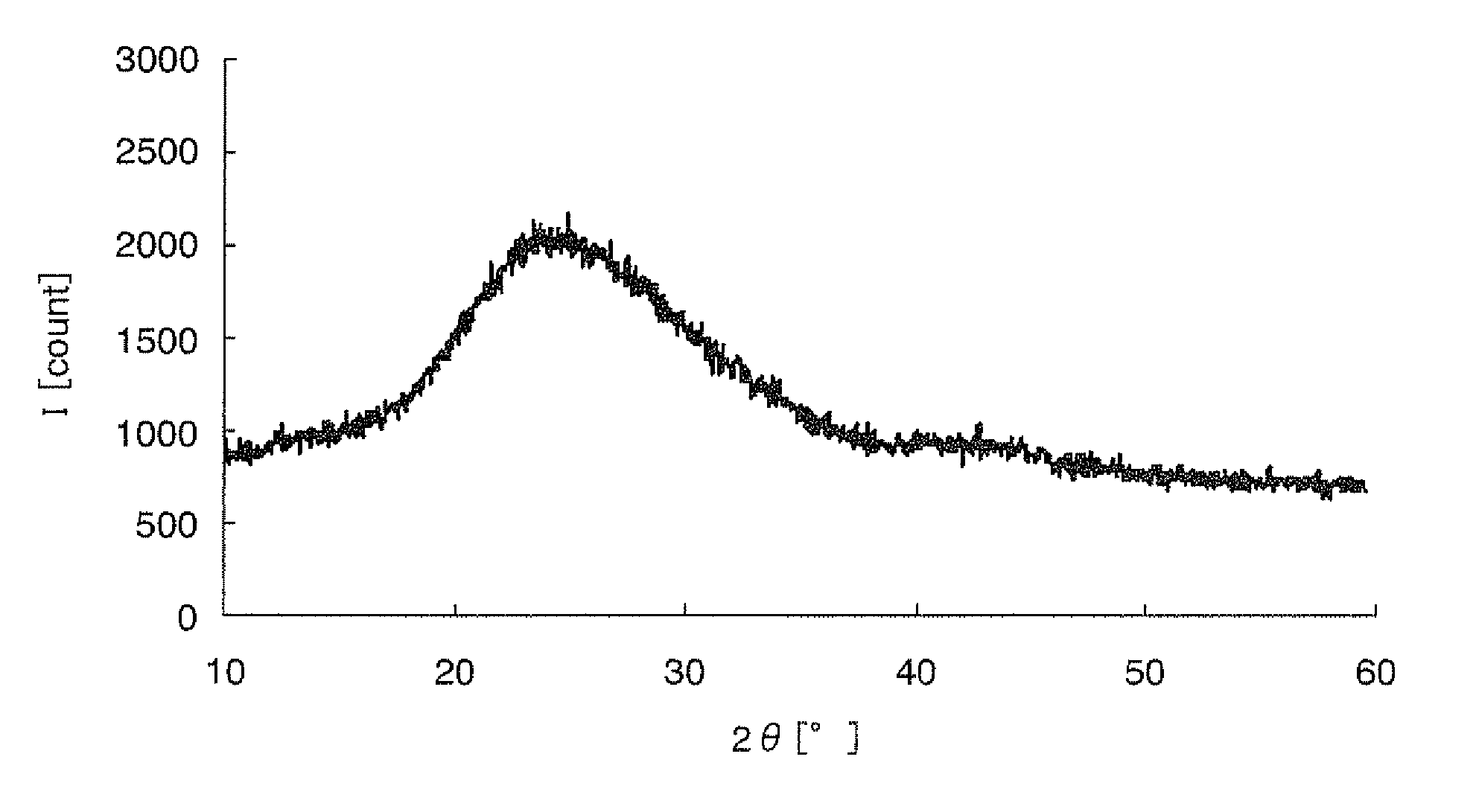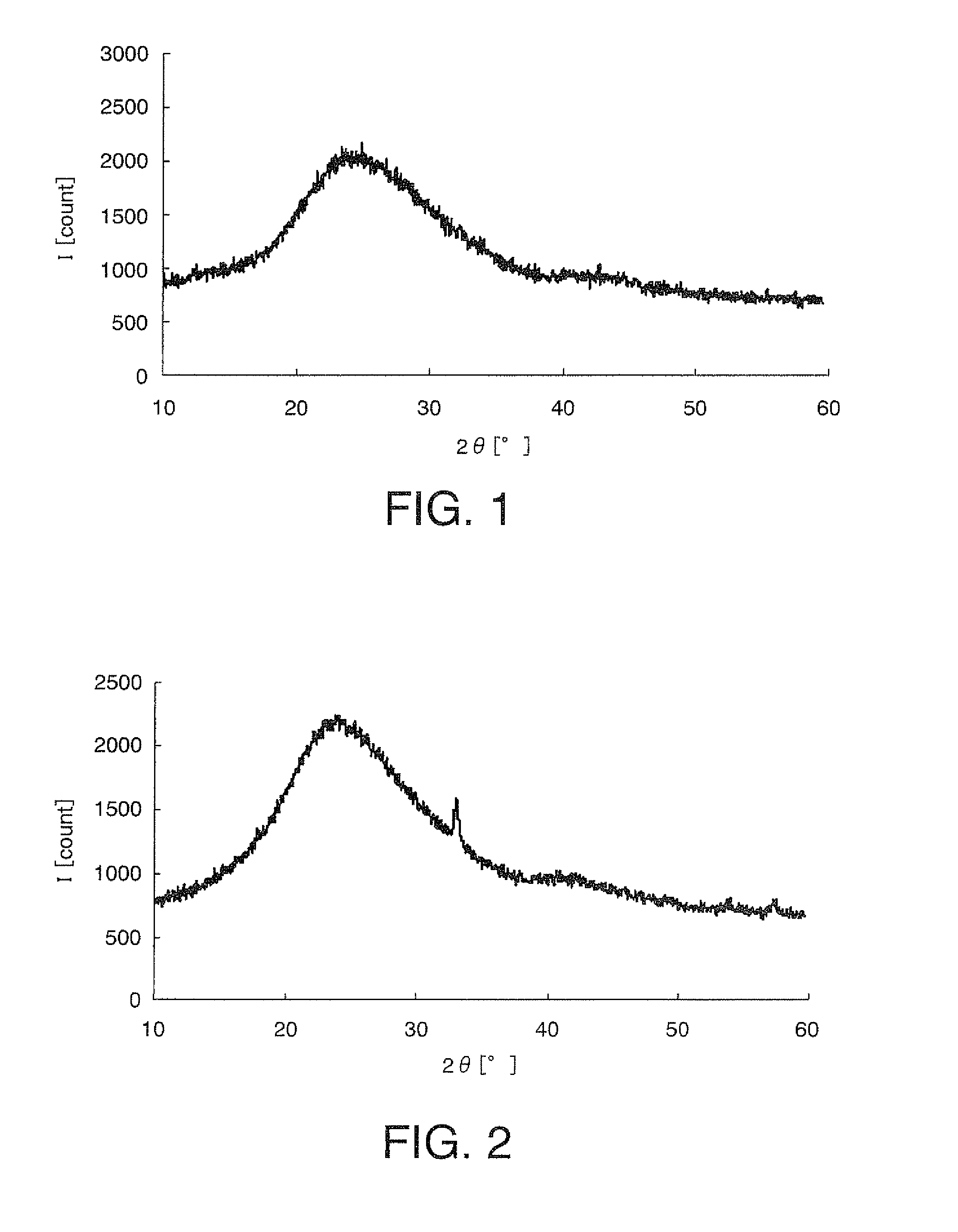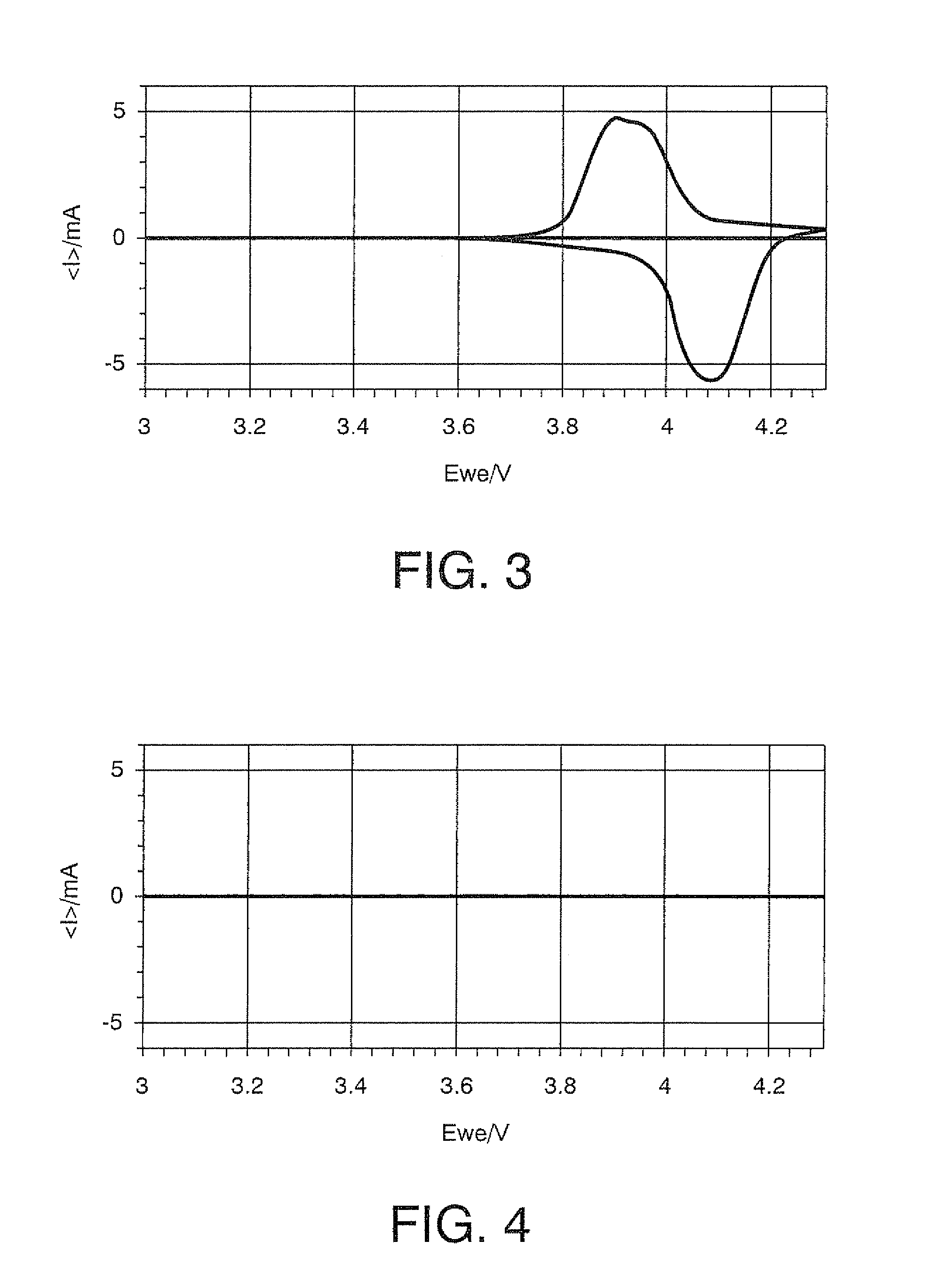Electrode plate for non-aqueous electrolyte secondary battery, method for producing the same, and non-aqueous electrolyte secondary battery
a secondary battery and electrolyte technology, applied in the direction of electrode manufacturing process, cell components, electrochemical generators, etc., can solve the problems of secondary batteries with high impedance, the particulate metallic compound itself cannot fix well to the surface of a current collector, and the current collector peels off, etc., to achieve excellent cycle characteristics, and high output and input characteristics
- Summary
- Abstract
- Description
- Claims
- Application Information
AI Technical Summary
Benefits of technology
Problems solved by technology
Method used
Image
Examples
example 1
[0208]A starting composition for forming a metal oxide that does not cause lithium ion intercalation and deintercalation reactions was prepared by adding 10.0 g of Fe(NO3)3.9H2O [molecular weight: 404] as the metallic-element-containing compound, to 20 g of ethanol and blending this mixture with 10 g of polyurethane resin (“KL-424” manufactured by Arakawa Chemical Industries, Ltd., Japan). Subsequently, to the starting composition were added 10 g of LiMn2O4 with a mean particle diameter of 4 μm as the cathode active material, 1.5 g of acetylene black (“Denka Black” manufactured by Denki Kagaku Kogyo K.K., Japan) as the conductive material, and 0.1 g of carbon fiber (“VGCF” manufactured by Showa Denko K.K., Japan), and the mixture was kneaded with a homogenizer (“Excel Autohomogenizer” manufactured by NIHON SEIKI KAISHA, Japan) at 7000 rpm for 40 minutes, whereby an electrode active material layer-forming composition was obtained. The ingredients of the electrode active material laye...
examples 2 to 18
Example 2
[0239]A cathode plate of Example 2 was obtained in the same manner as in Example 1, except that 0.4 g of Fe(NO3)3.9H2O [molecular weight: 404] as the metallic-element-containing compound was added to 5 g of methanol (this mixture was blended with 10 g of polyurethane resin KL-424 manufactured by Arakawa Chemical Industries, Ltd., Japan as in Example 1), and that the electrode active material layer-forming composition was applied to the current collector in the amount shown in Table 2.
example 3
[0240]A cathode plate of Example 3 was obtained in the same manner as in Example 1, except that LiMn2O4 with a mean particle diameter of 0.3 μm was used as the cathode active material, and that the electrode active material layer-forming composition was applied to the current collector in the amount shown in Table 2.
PUM
| Property | Measurement | Unit |
|---|---|---|
| particle diameter | aaaaa | aaaaa |
| thickness | aaaaa | aaaaa |
| thickness | aaaaa | aaaaa |
Abstract
Description
Claims
Application Information
 Login to View More
Login to View More - R&D
- Intellectual Property
- Life Sciences
- Materials
- Tech Scout
- Unparalleled Data Quality
- Higher Quality Content
- 60% Fewer Hallucinations
Browse by: Latest US Patents, China's latest patents, Technical Efficacy Thesaurus, Application Domain, Technology Topic, Popular Technical Reports.
© 2025 PatSnap. All rights reserved.Legal|Privacy policy|Modern Slavery Act Transparency Statement|Sitemap|About US| Contact US: help@patsnap.com



